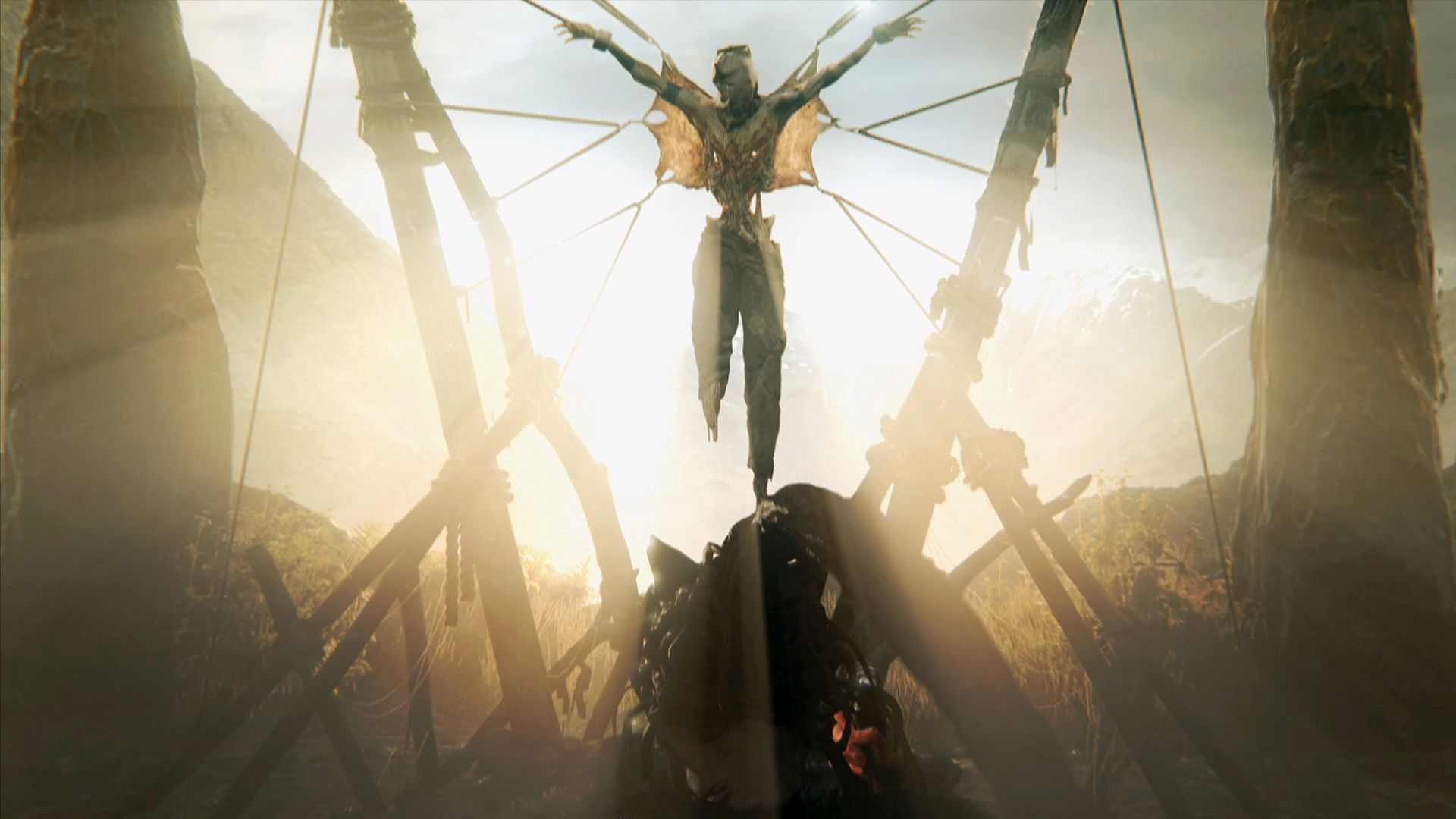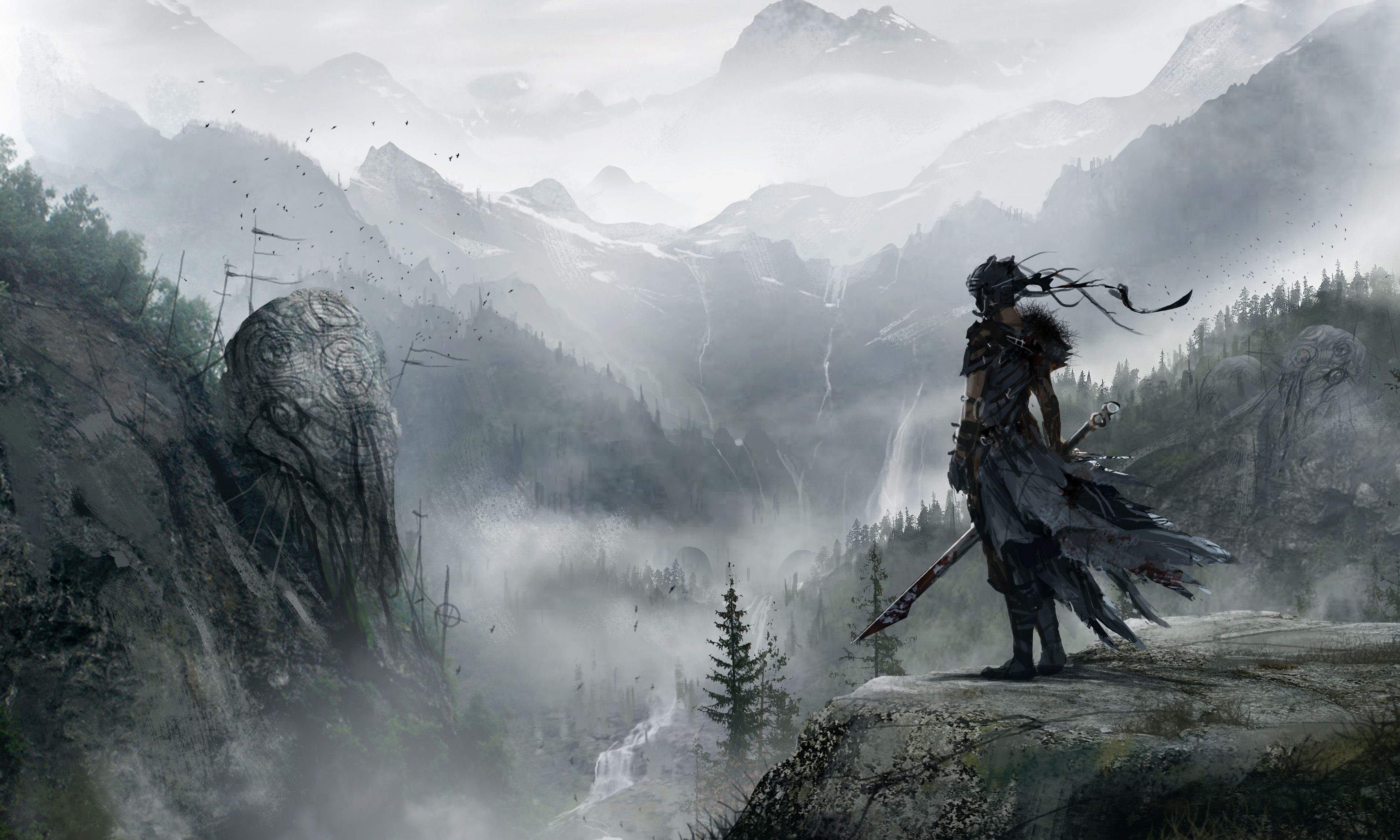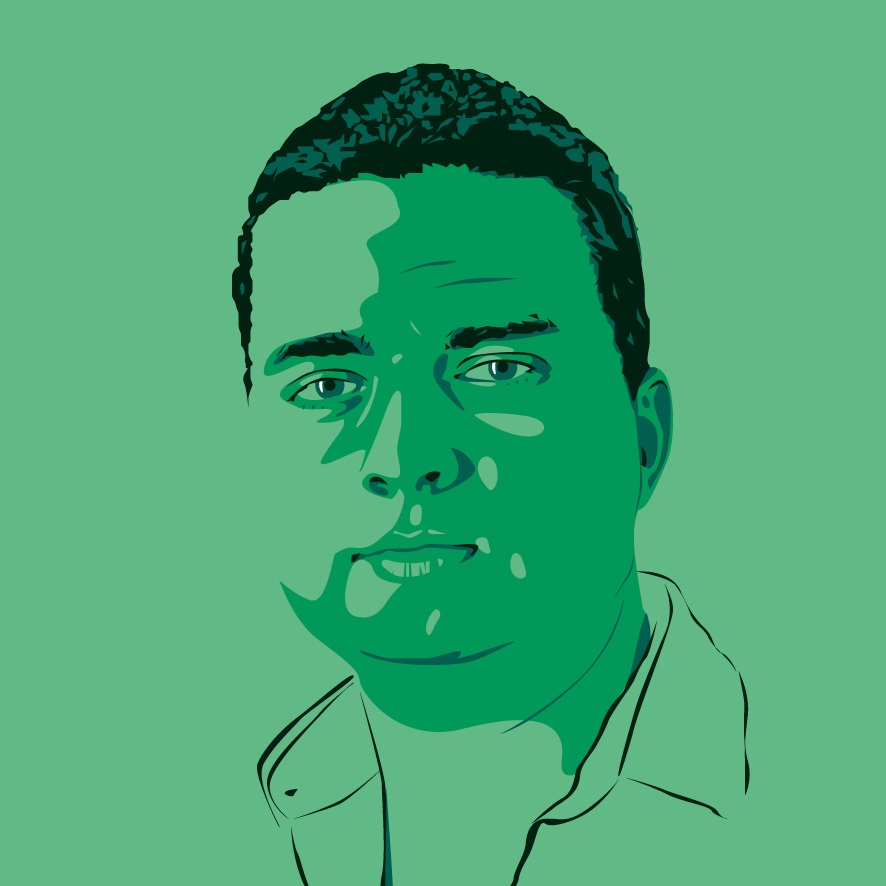Building Hellblade, Ninja Theory's gritty Norse brawler

Helheim’s entire basic landmass has been mapped in Unreal Engine 4 and it looks impressive. I like this approach to world-building. From a bird’s-eye view the game’s circular logo is visibly imprinted onto the map and forms the shape of the world itself, which is composed of archipelagos, high cliffs and beaches. From almost anywhere on the map, you can see an enormous structure at the centre, a tower built to resemble a Viking warship, and from heightened regions I can see the grooves of the logo built into the land. These lines form beaches in one part of the map, a marsh with a boat graveyard towards the northeast, and a dark mountain tunnel where the team plans to have disembodied hands reaching out at Senua. Already it feels like there’s a coherent world being created. I like that it’s in a professional state when the rest of the game is still being figured out. Veteran art director Stuart Adcock shows me a whole board of work-in-progress map designs that the team made, all with those symbols (which you can see the outline of in the image below) embedded into the landscape.
To build a world of this size, the art team is creating assets that can be reused—95% reused is the target. I’m shown how a tower can be constructed from one set of building blocks, how details can be recycled and resized, and how individual detail assets can add character on top of these basic blocks. I’m shown one entire area that was quickly put together in one morning, a temple area with arches and puddles dropped around, and there is a nice sense of place just to this. Nothing seems bespoke. The aim is to only use three rigs for enemy character models. I’m shown how much mileage they can get out of even the most basic undead Viking characters by adding a helmet or a weapon, increasing size or by removing chunks of flesh to show bone. They demonstrate to me the importance of silhouette in creating the impression of variety among Senua’s foes. I suspect the legions of individual Uruk-hai in Shadow of Mordor, no two of them quite alike, were created using similar mix and match techniques. You lose nothing doing it—I can see more and more developers following suit.
Hellblade’s art direction features a noticeably washed out colour palette and a leaning towards horror. The enemies are being created in tandem by the game’s one senior character artist, Claire Blustin, who has worked at Ninja Theory for eleven years. “This isn’t quite procedural generation, but it’s somewhere in between how we used to do things and procedural generation,” Antoniades tells me.

The character and environmental design is coming along nicely, Antoniades has locked himself in a room to finish the story, and progress is definitely being made on the combat system, too. It’s the second week of December 2014, and the aim is to get the basic combo figured out by Christmas. When I give Hellblade a tryout in a test arena it plays like they’re basically there.
There’s a weighty feel to the normal three-hit attack and to the slower heavy, and the way the camera is intentionally pulled should make fights feel more like one-on-one, high stakes affairs than DmC. Ninja Theory is still looking at potential inspiration, however: I mention Chris Thursten favourite Blade Symphony and the studio’s project development manager, Dominic Matthews, makes a note. Promising groundwork is being laid here. Unlike DmC and its bevy of upgrade systems, Hellblade’s combat abilities will be mostly unlocked from the start.
Antoniades wants to tap into the self-expression offered by one-on-one fighting.
“We learnt a lot from Capcom,” Antoniades says. “Having worked closely with them for two years, they gave us lots of advice on their philosophy, so we’re taking a lot of that forward. Key to that is responsiveness, obviously. We focused, in previous games like Heavenly Sword, on animation realism, making sure footsteps felt right... On DmC, there was none of that, it was just snapping—it was just snapping from move to move and that’s what we were told we had to do, and we didn’t get any negative feedback from that. In fact, it was quite the opposite.”
Antoniades wants to tap into the self-expression offered by one-on-one fighting games, too. “If you can think of something to do, we should let you do it. That’s where creative expression comes from in playing the game.”
The biggest gaming news, reviews and hardware deals
Keep up to date with the most important stories and the best deals, as picked by the PC Gamer team.
Everything else is still being figured out—I’m shown a prototype of an illusion-based puzzle, where there’s a broken bridge halting Senua’s progress. If the player can line up the camera so the broken parts appear as though they’re connected, when she returns to the bridge it will be fixed. There’s a bit of Arkham’s Riddler trophies to this that has a lot of potential uses.


